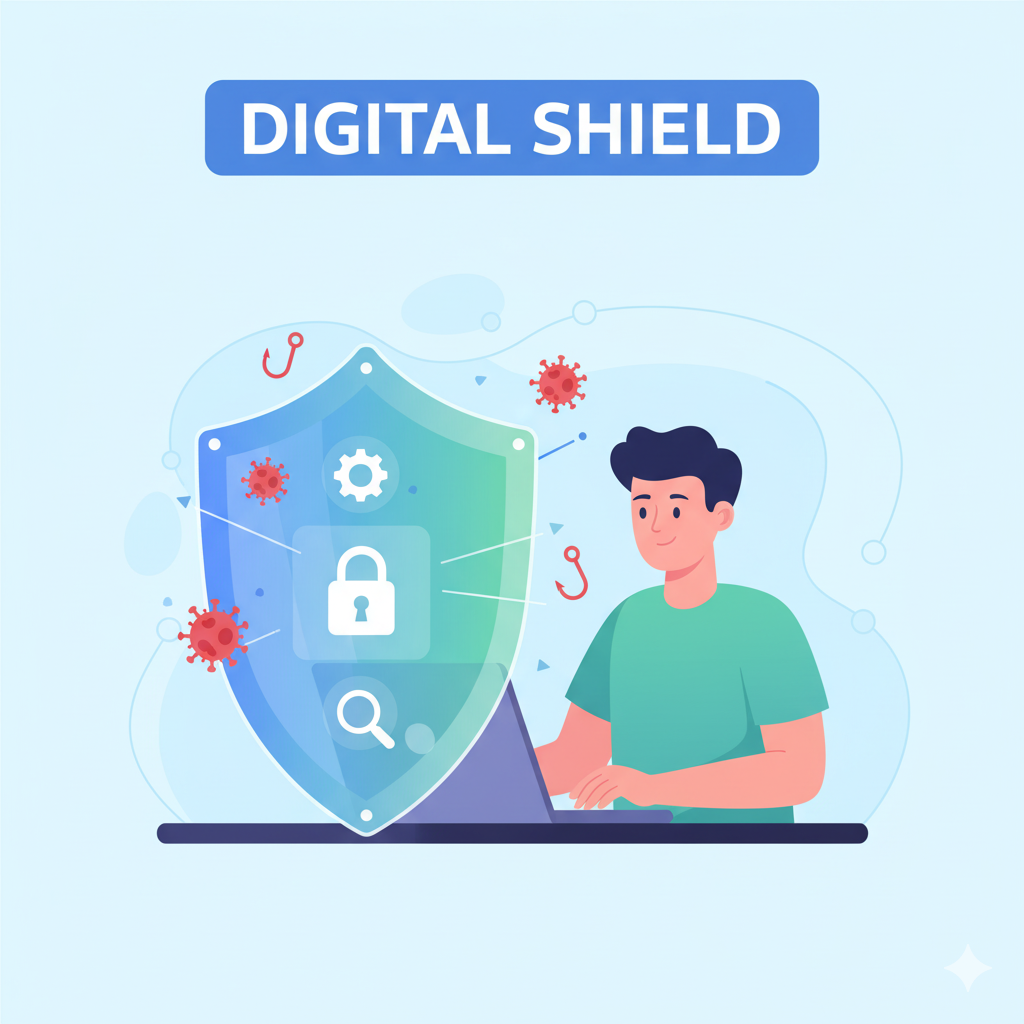Essential Safety Tips
10 fundamental strategies to protect yourself online

1. Think Before You Share
Once something is online, it can be difficult or impossible to completely remove. Before posting:
- Would you be comfortable if this was seen by teachers, parents, or future employers?
- Does this reveal personal information (address, phone, location)?
- Could this be used to hurt or embarrass you or others?
Remember: Even "private" posts can be screenshot and shared.
2. Use Strong Privacy Settings
Every social media platform has privacy settings—use them:
- Set profiles to "private" or "friends only"
- Limit who can see your posts, photos, and personal information
- Control who can tag you in photos or posts
- Disable location services on photos and posts
- Review your settings regularly (platforms change them)
3. Be Selective About Friend/Follow Requests
Not everyone who requests to follow you has good intentions:
- Only accept requests from people you know in real life
- Be cautious of accounts with no profile picture or very few followers
- Check mutual friends before accepting
- It's okay to ignore or decline requests from strangers
- Remove followers who make you uncomfortable
4. Create Strong, Unique Passwords
Weak passwords make it easy for bullies to hack your accounts:
- Use at least 12 characters with a mix of letters, numbers, and symbols
- Never use personal information (birthdate, pet names, etc.)
- Use a different password for each account
- Enable two-factor authentication (2FA) whenever possible
- Never share your passwords with anyone
Tip: Consider using a password manager to keep track of complex passwords.
5. Don't Engage with Bullies
As difficult as it is, responding to cyberbullies usually makes things worse:
- Don't reply to mean messages or comments
- Don't retaliate or try to "get even"
- The bully wants a reaction—don't give them one
- Instead: screenshot, block, report, and tell someone
6. Use Blocking and Reporting Tools
Every platform provides tools to protect yourself—use them:
- Block: Prevents someone from contacting you or seeing your content
- Report: Alerts the platform to abusive behavior
- Mute: Stops seeing someone's posts without blocking them
- Restrict: Limits what someone can see and do (Instagram, Facebook)
Don't hesitate to use these tools—your safety comes first.
7. Save Evidence of Cyberbullying
If you experience cyberbullying, documentation is crucial:
- Take screenshots of messages, posts, comments, and profiles
- Include dates, times, and usernames
- Save entire conversation threads, not just single messages
- Don't delete messages until you've saved copies
- Store evidence in a safe place (cloud storage, email to yourself)
Why? Evidence is essential for reporting to platforms, schools, or authorities.
8. Protect Your Personal Information
The less personal info you share, the safer you are:
- Never share your full name, address, phone number, or school publicly
- Be cautious about posting plans or locations in real-time
- Review photo backgrounds for identifying information
- Don't share financial information or passwords
- Be skeptical of requests for personal details, even from "friends"
9. Take Regular Digital Breaks
Constant online presence can be exhausting and harmful:
- Set boundaries for screen time and social media use
- Take breaks from platforms if you're feeling overwhelmed
- Turn off notifications to reduce stress
- Spend time on offline activities and relationships
- Remember: you control your online presence, not the other way around
10. Trust Your Instincts
If something feels wrong, it probably is:
- Trust your gut feelings about people and situations
- If someone makes you uncomfortable, block them
- If a message seems suspicious, don't click links
- Talk to a trusted adult if you're unsure
- You have the right to feel safe online
